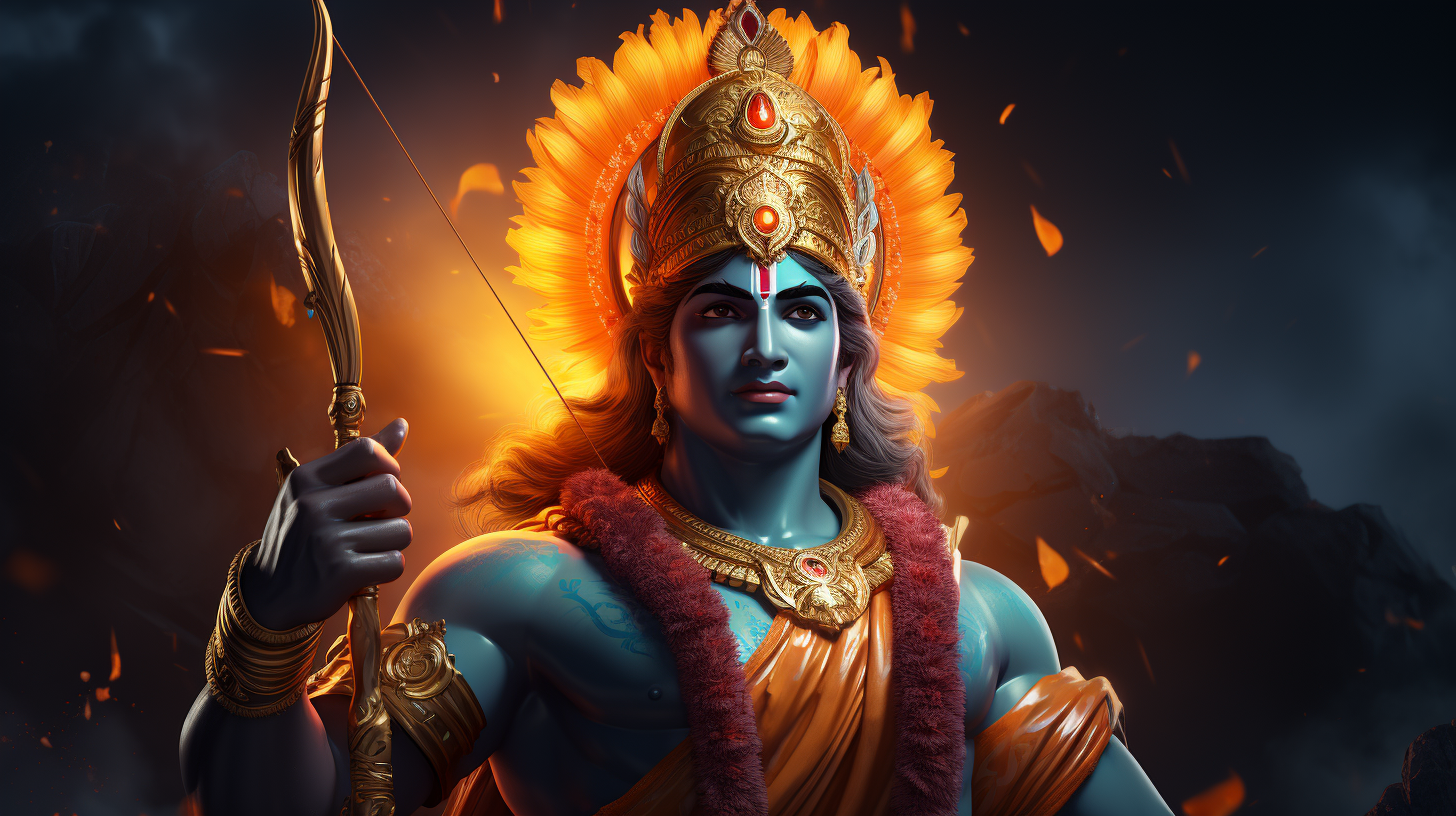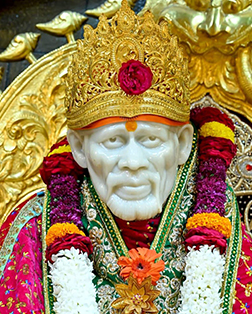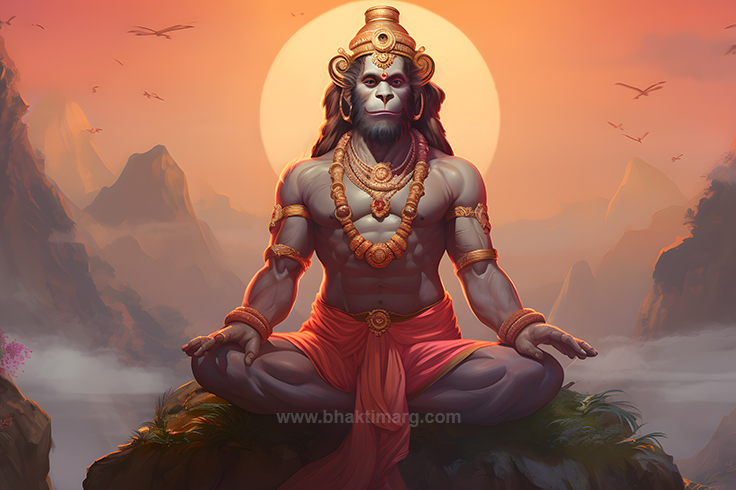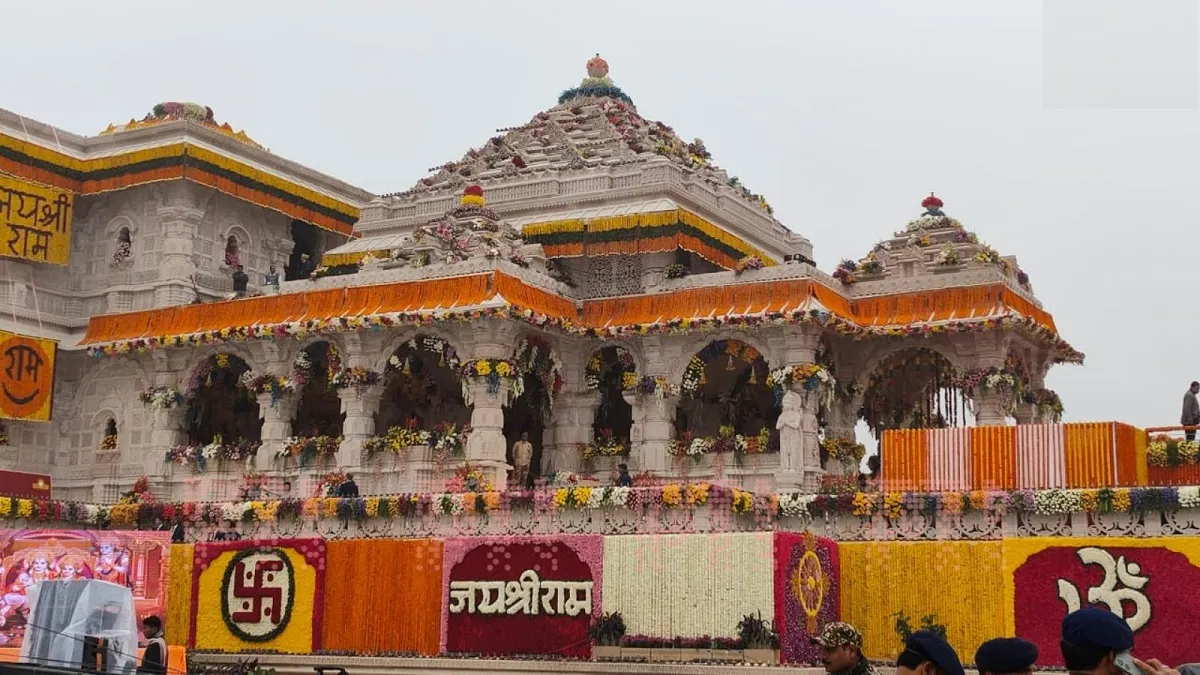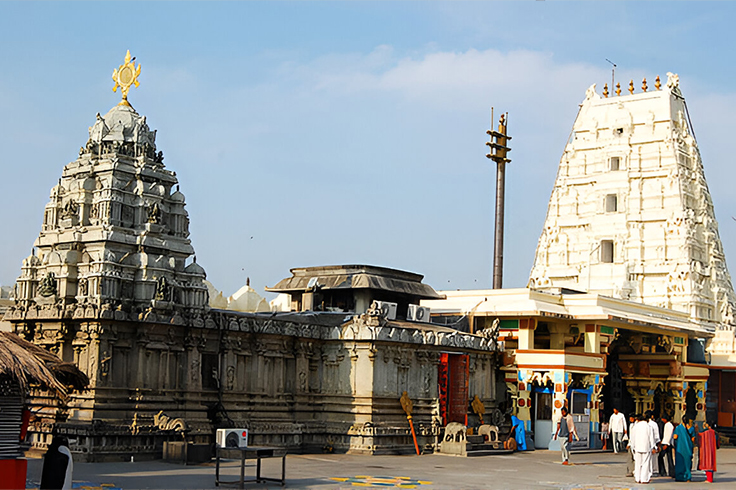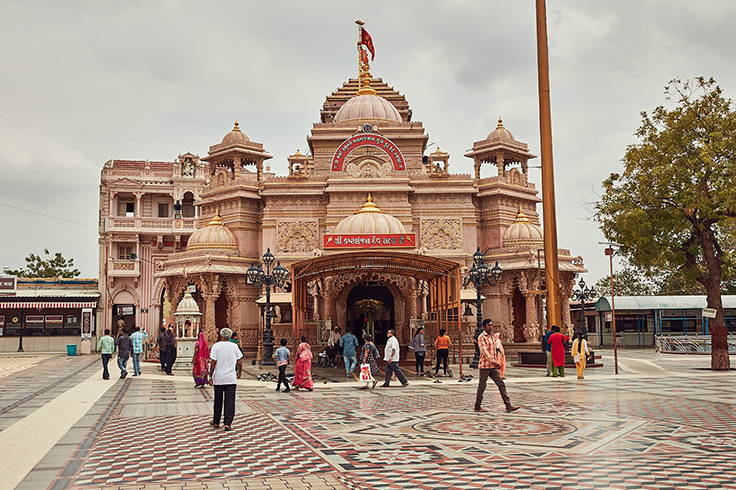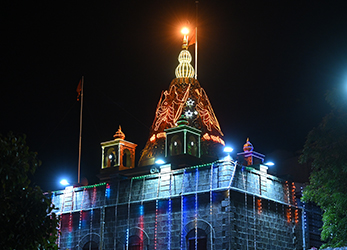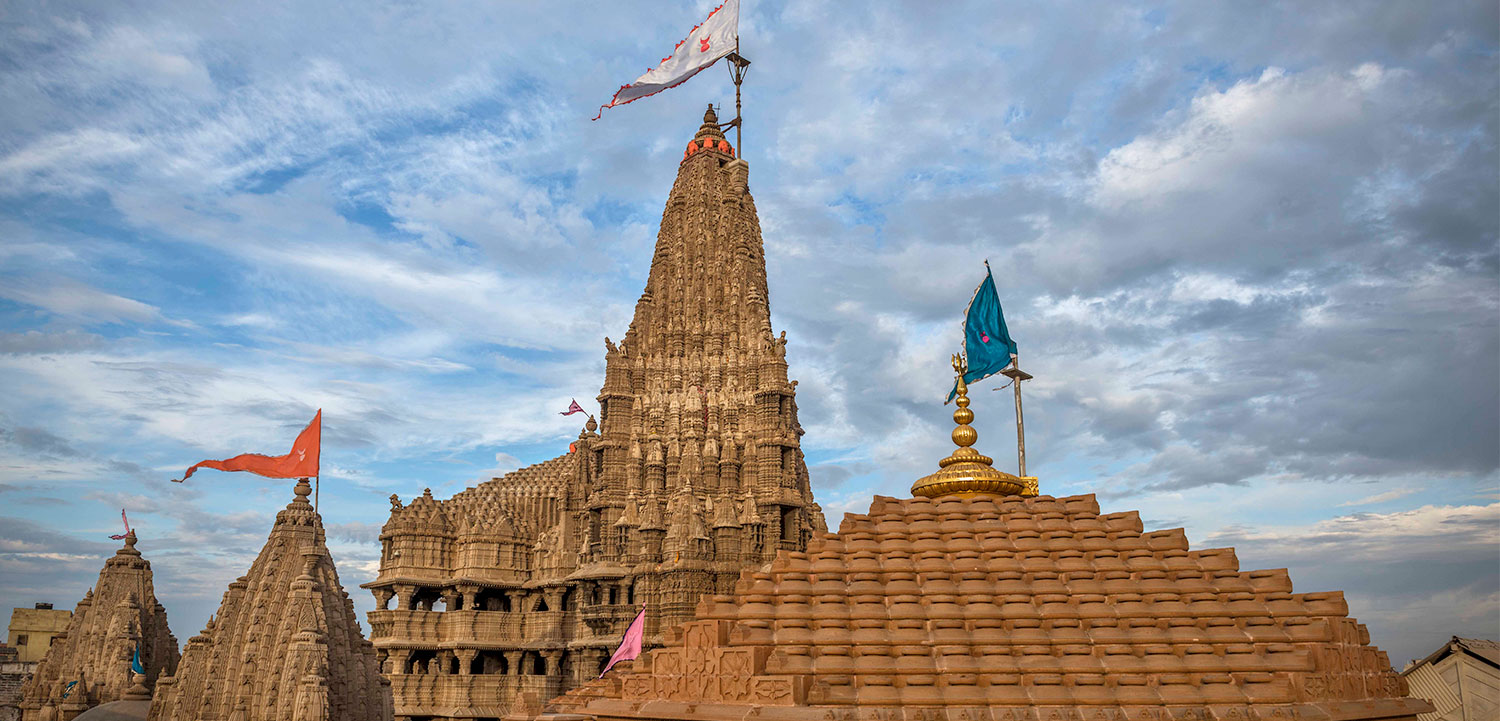
Top 10 Most Powerful Hindu Gods: Legends and Significance
One of the world’s oldest religions, Hinduism is deeply rooted in a rich tapestry of devotion, where gods and goddesses represent different aspects of the cosmos. It is a theological belief that praises a wide range of deities and gods and practices a wide range of spiritual and religious traditions yet is unified by the concept of Dharma which is the central idea of Hinduism. Hindu tradition acknowledges multiple Gods and Goddesses each having extraordinary powers and influence.
Each god symbolizes a unique facet of existence, offering guidance, protection, and blessings. In this blog, let’s examine the most powerful Hindu gods and delve into their legends and significance in Hinduism.
Top 10 Most Powerful Hindu Gods
1. Lord Krishna: The Divine Strategist

Birth of Krishna:
Lord Krishna was born to Devaki and Vasudev the royals of Mathura but to save him from the wrath of her evil brother Kamsa until he was of age they sought a way. As per divine intervention, Vasude left little Krishna with Yashoda and Nanda the local Cowheard head of Mathura staying across the Yamuna river and exchanging him with their daughter. This day when Lord Krishna was born is celebrated as Krishna Janmashtami. This was the most self-aware form of Lord Vishnu making him the most powerful god of Hindu tradition.
Significance in Hinduism:
Lord Krishna, is revered as a symbol of love, wisdom, and divine playfulness and is the eighth avatar of Lord Vishnu. His life, as depicted in the Mahabharata and the Bhagavad Gita, showcases his unparalleled ability to guide, inspire, and lead with a perfect blend of intellect, compassion, and foresight. From his divine birth to his last breath his life is a spiritual guide on duty, righteousness, and devotion. Since childhood, he has showcased several miracles lifting the Govardhan hill, illustrating his playful yet protective nature, killing the evil sent by his maternal uncle and saving his village, defeating Kaliya Naag. One must not forget his notorious stealing butter, breaking Gopi’s pot, and playing the enchanting flute, the Madhurastakam Mantra does justice to this side of Lord Krishna.
Role in Mahabharata:
In his later years after becoming king of Dwarika his role in the Mahabharata was pivotal, as Arjuna’s charioteer in the Kurukshetra War exemplifies his strategic brilliance. Through his guidance, Krishna transforms Arjuna’s hesitation into unwavering resolve, enabling him to fulfill his warrior duties while upholding righteousness.
Lesson to Learn from Shri Krishna:
As a divine strategist, Krishna teaches us the importance of adaptability, ethical decision-making, and maintaining balance in challenging situations. Even today his lessons continue to inspire leaders and individuals, proving that wisdom when paired with action, can overcome any obstacle, and experience his divine existence many devotees visit The Dwarikadhish Temple in Gujrat. Lord Krishna has become the most popular Hindu god in the world owing to the globally expanding ISKCON Temple that educates people about Vishnu philosophy and Krishna ideology.
2. Shri Ram: The Embodiment of Virtue

Who is Shri Ram:
Lord Shri Ram, is the seventh avatar of Vishnu called Purushottam, and Indian most powerful god owing to his unique powers, nature of epitomizes righteousness (dharma), and ideal conduct even in the face of immense personal hardship. His life story, narrated in the epic Ramayana, highlights his unwavering dedication to duty, family, and truth being a testament to the ideals of morality, humility, and selfless devotion to duty. Known for his compassionate rule during the golden age (Ram Rajya), Shri Ram is a beacon of justice. Throughout his journey, Shri Ram exemplifies virtues like compassion, patience, and justice.
His Journey and Plights:
Since a young age he endeavored the path of the righteous ruler and was trained under Maharshi Vashista and Vishwamitra. His unwavering commitment to help people made him stand out among the rulers, also he accepted Vanavas for the sake of a promise his father made. Later rescuing Sita from Ravana, the demon king of Lanka, symbolizes the triumph of good over evil and portrays his resilience. Even in battle, Shri Ram upheld ethical principles, treating his enemies with respect and offering them chances for redemption. One of Shri Ram’s most notable qualities is his ability to balance personal emotions with public responsibility.
Legend of Prince Ram:
His rule in Ayodhya referred to as Rama Rajya, is celebrated as a golden age of prosperity, justice, and harmony, where the needs of the people took precedence over all else. Today the same place after thousands of years is referred to as Ramjanma Bhoomi, and recently The Ram Mandir in Ayodhya has been rebuilt after a long fight in court that rewarded the devotee’s faith. Shri Ram’s life continues to inspire millions, teaching us to uphold righteousness, embrace humility, and act with integrity in all circumstances. His legacy remains a guiding light for those striving to live a virtuous and meaningful life.
3. Hanuman: The Devoted Warrior

Birth of Hanuman:
The whole legend of Hanuman’s birth is said to be linked with Bhagavan Shiv having the desire to serve his favorite Sri Hari Vishnu and stay with him in the mortal world as his devotee. He was born to Anjani a cursed Apsara who married the Vanar King Kesari, through the blessing of lord Varun when she was praying to lord Shiva to grant her child hence called ‘ Shivansh’, and considered the most powerful Hindu gods.
Who is Hanuman?:
Hanuman is the mighty monkey god said to be an Avatar of the Lord Shiva revered as the symbol of strength, devotion, and selfless service. He was graced with boon and blessing from all the gods at a young age making him a powerful god in Hindu tradition. Pawanputra Hanuman is celebrated as a devout follower of Shri Ram, and his devotion shines brightly in his quest to find Sita, who was abducted by Ravana. Crossing the vast ocean to reach Lanka, Hanuman’s determination, resourcefulness, and courage are unmatched. His act of setting Lanka ablaze after delivering Shri Ram’s message to Sita is a testament to his righteous fury against injustice. In the great battle of Lanka, Hanuman emerges as a formidable warrior, protecting Shri Ram and Lakshman with unparalleled valor.
Hanuman as Chiranjeevi:
He is considered one of the Eight Cheeranjivi who will live until the end of time and in the Kaliyug will guide and help Kalki the tenth Avatar of Lord Vishnu. His appearance in Mahabharat to guide Bheema his divine brother and being present on top of Arjuna’s chariot shows his nature to be fair and fulfil his duty towards righteousness. Hanuman’s legacy teaches us the importance of loyalty, humility, and serving a higher purpose. As the ultimate devotee and warrior, he remains a guiding light for those seeking strength and spiritual connection.
Hanuman’s Devotion:
Hanuman’s immense power comes from his unwavering devotion and knowledge of sacred mantras. Reciting the Hanuman Chalisa is believed to provide protection and remove obstacles. His story inspires humility and the power of faith.
4. Lord Ganapati: The Remover of Obstacles

Birth of Ganesha:
Legends describe his creation by Goddess Parvati the divine mother naming him Vinayak but later an encounter with his father Lord Shiva led him to get an elephant head. Lord Ganapati, is the most loved god in Hinduism also known as Ganesha, he is the elephant-headed god of wisdom, prosperity, and new beginnings also known as the remover of obstacles. Before undertaking any task, Hindus invoke Ganesha to ensure success hence known as the most powerful Hindu gods.
Legend of Lord Ganesh:
His wisdom is legendary, as depicted in the story of his victory over his brother Kartikeya in a race around the world. By circling his parents and declaring them his universe, Ganapati exemplified the power of understanding and devotion.
Significance of Ganpati’s Existence:
His broken tusk signifies sacrifice for knowledge, and the story of his elephant head signifies being patient, humble, and forgiving. His vehicle, the humble mouse, signifies the ability to overcome even the smallest fears and difficulties. Ganapati’s various forms, from the playful Bal Ganesh to the meditative Siddhi Vinayaka, represent his multifaceted nature as a guide for all aspects of life.
Celebration for Ganpati Bappa:
He is considered the most popular Hindu god in the world owing to being a favorite of the devotees and his appeasing appearance and even his festival is celebrated across the globe. His festivals, especially Ganesh Chaturthi, unite communities in devotion and celebration. Devotees often unite together and celebrate the occasion by singing Ganpati aarti and sharing sweets to propel goodness and positive faith. In Mumbai, the most revered place to worship the people’s favorite Ganpati Bappa is Shiddhivinayak in Dadar. Worshiping Lord Ganapati reminds us to approach life’s challenges with faith, wisdom, and resilience, trusting in his divine presence to clear our path.
5. Lord Shiva: The Supreme Destroyer

Who is Shiva?:
Lord Shiva, one of the principal deities in Hinduism, is revered as the Supreme Destroyer Hindu god in the world, a cosmic force responsible for the dissolution and transformation of the universe. He is part of the Holy Trinity (Trimurti), alongside Brahma, the creator, and Vishnu, the preserver, embodying the dynamic principle of destruction that paves the way for renewal and regeneration. Philosophically he is said to be the ultimate consciousness and his completer is the material energy that is Adi Shakti.
The Sagun Form of Lord Shiva:
Residing in Mount Kailash, Shiva is worshipped as the ultimate ascetic and a householder with Parvati and their sons, Ganapati and Kartikeya. Shiva’s fierce Rudra form and his calm Shankar form highlight duality. Depicted as an ascetic with matted hair, a crescent moon on his head, and the sacred Ganga flowing from his locks, represent the balance between austerity and cosmic power. His blue throat, a result of consuming the deadly halahala poison during the churning of the ocean (Samudra Manthan), reflects his role as the savior of creation. His trident (trishul) signifies the power to destroy ignorance, ego, and attachment, while his third eye represents ultimate wisdom and insight.
Significance of Shiva:
Shiva’s divine dance, the Tandava, symbolizes the cycle of creation, preservation, and destruction, emphasizing that endings are not permanent but necessary for new beginnings. As the lord of meditation and yoga, Shiva inspires seekers to transcend worldly attachments and realize their inner truth. His existence in Kailash shows his connection to the mortal world and his marriage to Parvati established the same, yet his seclusion and impartial behavior towards all existence regardless of their race and origin shows his detached attitude and all are equal for his theory.
Worshiping Lord Shiva:
Devotees honor Shiva during Maha Shivratri, seeking liberation and spiritual awakening. Despite his fierce form as the destroyer, Shiva is also compassionate, granting blessings to devotees with unwavering faith. People often practice the art of dancing to dedicate to lord shiva as he is the god of dance Nataraj, the song Shiv Tandava Stotram is dedicated to worshiping him. There are various Shiv Mantras and Shiv Stotram that devotees chant, as chanting is considered a prime method of praising. Worshiping Lord Shiva fosters courage, self-awareness, and the strength to embrace life’s changes. His legacy as the Supreme Destroyer teaches us that destruction is not an end, but a vital process for growth, transformation, and spiritual evolution.
6. Lord Brahma: The Creator Of the Universe

Who is Lord Brahma?:
In Hinduism, there are three principal deities and Brahma Bhagwan is one of the the Hindu Trinity (Trimurti), alongside Lord Vishnu and Lord Shiva. He is regarded as the creator of the universe and all living beings, embodying the creative force that initiates the cosmic cycle of creation, preservation, and destruction hence counted among the powerful Hindu gods.
Origin and Role:
It is said that Brahma was born from a lotus that emerged from Lord Vishnu’s navel, representing the beginning of creation. In many texts, he is depicted as sitting on a lotus, symbolizing purity, knowledge, and divine creation having four heads. His primary role is the creation of the cosmos and the birth of all beings gods, humans, and animals, hence is considered one of the top 10 most powerful gods in the world.
The Faces of Brahma:
Lord Brahma is originally said to have five heads according to Brahma Puran but on one occasion when Brahma’s arrogance reached its peak his fifth head started reciting Vedas adversely creating disturbance in the cosmos. Lord Shiva annihilated the fifth head of Lord Brahma and restored the balance, hence he is often depicted with four faces, each facing one of the four directions, symbolizing his all-encompassing knowledge. These faces represent the four Vedas Rigveda, Yajurveda, Samaveda, and Atharvaveda, and their role in creating and maintaining the sacred wisdom of the universe.
Legends and Symbolism:
Brahma is credited with the creation of the universe and the first man, Manu, who is considered the ancestor of humanity. He is associated with wisdom and knowledge, often depicted holding a Veda, a rosary, and a water pot, symbolizing his authority over creation, time, and cosmic law.
Worship and Legacy:
Despite his pivotal role in creation, Lord Brahma is less commonly worshipped compared to other deities like Vishnu and Shiva. It is said that he was cursed by Lord Shiva owing to his arrogant nature, However, he is venerated in temples like the Brahma Temple in Pushkar, Rajasthan. Lord Brahma’s story highlights the cyclical nature of time and the interdependence of creation, preservation, and destruction in the Hindu worldview.
7. Lord Parshuram: The Sage Warrior

Who is Parshuram?:
Lord Parshuram, revered as the sixth avatar of Lord Vishnu, is a unique blend of a warrior and sage. His name translates to “Ram with an axe,” symbolizing his role as a destroyer of evil and protector of righteousness (dharma).
Birth and Lineage:
Parshuram was born to Sage Jamadagni and Renuka, belonging to the Brahmin class but trained as a Kshatriya. His upbringing combined spiritual wisdom with martial skills, making him a perfect embodiment of knowledge and strength.
Legends and Deeds:
Lord Parshuram is known for his intense sense of justice and his mission to rid the world of oppressive Kshatriya kings and he is considered one of the eight Chiranjeevi. A pivotal legend recounts how he avenged the death of his father, Jamadagni, by defeating tyrannical rulers, it is said that Parshuram conquered the earth 21 times to restore balance making him the most powerful god of Hindu. Another significant tale highlights his encounter with Lord Ram during Sita’s swayamvar, showcasing his humility and devotion despite his fiery temperament. Later in Mahabharat, his appearance is significant as he trains Bhishma and Karna also aiding the needy and intervening in Pandava and Kaurava conflict where needed.
Symbolism and Teachings:
Parshuram represents the destruction of arrogance, greed, and injustice. His life teaches the importance of using strength responsibly and balancing spiritual wisdom with worldly duties.
Worship and Legacy:
Devotees worship Lord Parshuram during Akshaya Tritiya and other occasions to seek courage and righteousness. He is also considered the founder of the Konkan region and Kerala, shaping his legacy as both a spiritual guide and a protector. Lord Parshuram’s stories inspire individuals to fight injustice while staying grounded in morality and spirituality. Hence there are various temples of Lord Parshuram in the region and the most famous is the Parsuhram Devasthan Chiplun.
8. Lord Kartikeya: The Divine Warrior

Who is Lord Kartikeya?:
He is the eldest son of Lord Shiva and Goddess Parvati and the elder brother of Lord Ganesha. He is denoted with various names like Skanda, Murugan, or Subramanya, and is a revered Hindu deity embodying valor, wisdom, and youthfulness. Being the commander of the celestial army, Kartikeya is considered the most powerful god of Hindu and is worshipped as the god of war and victory.
Birth and Divine Mission:
Kartikeya’s birth was destined to defeat the demon Tarakasura, who could only be slain by Shiva’s offspring. Born from Shiva’s and Adi Shakti’s fiery energy, Kartikeya was nurtured by six celestial maidens, symbolized as the six stars of the Pleiades constellation. This is why he is also called Shanmukha, meaning “the one with six faces.”
Legends and Deeds:
One of the most popular legends of Kartikeya is his battle with Tarakasura, with his spear (Vel), gifted by Goddess Parvati, he vanquished the demon, restoring cosmic order. Kartikeya is also associated with intelligence and wisdom, evident in the story where he circumvents the world symbolically by walking around his parents, showcasing devotion as supreme knowledge. Lord Kartikeya signifies the triumph of good over evil and the power of knowledge and discipline. His six faces represent clarity, foresight, wisdom, patience, loyalty, and action.
Worship and Legacy:
In South India, particularly Tamil Nadu, Kartikeya is deeply venerated as Murugan, with grand temples like Palani and Tiruchendur dedicated to him. His festivals, such as Thaipusam and Skanda Shashti, celebrate his divine victories. Lord Kartikeya inspires devotees to overcome challenges with courage, wisdom, and unwavering devotion, symbolizing the eternal battle against ignorance and negativity.
9. Lord Vishnu: The Preserver of the Universe

Who is Lord Vishnu?:
He is one of the principal deities in the Hindu Trimurti and is revered as the preserver and protector of the universe making him part of the most powerful god of Hindu. His divine role is to maintain balance and harmony in creation, ensuring the sustenance of life and the triumph of good over evil.
Depiction and Significance of Shri Hari Vishnu:
He is depicted resting on the cosmic serpent Shesha, which signifies infinite existence. He is shown as a serene figure with a dark blue complexion, Vishnu often holds a conch (shankha), a discus (chakra), a mace (gada), and a lotus (padma), each symbolizing different aspects of preservation and divine power. The conch represents the primordial sound of creation, the discus signifies the annihilation of evil, the mace embodies strength, and the lotus symbolizes purity and spiritual growth. Vishnu resides in Vaikuntha, the realm of eternal bliss, alongside his consort, Goddess Lakshmi.
10 Avatar of Vishnu:
Vishnu’s ten avatars, known as the Dashavatara, are manifestations he assumes to restore balance whenever dharma (righteousness) is threatened. From the aquatic Matsya saving the Vedas, or the Purushottam Shri Ram, to the powerful Krishna guiding humanity through the Bhagavad Gita or Narshima avatar destroying evil, these incarnations highlight his commitment to protecting creation.
Worshiping Lord Vishnu:
Devotees seek his blessings for peace, protection, and sustenance in life. Lord Vishnu’s teachings inspire humanity to uphold dharma, live harmoniously, and trust in divine intervention during times of turmoil, making him the eternal preserver of the universe. Festival like Vishnu Ekadashi is celebrated with great promo and mantras Like Vishnu Sahatranam and Shri Hari stotram are chanted to please the lord. The devout followers of Vishnu are called Vaishnava following Vaishnavism and wearing Tulasi Maal as a symbol of their dedication to the lord.
10. Lord Narasimha: The Protector of Devotion

Who is Lord Narasimha?:
It is the fourth avatar of Lord Vishnu which he took to protect his Parambhakt Prahlad from his father Hiranyakashipu who belonged to the demon race and was against his son’s devotion to Vishnu. Manifested in a fierce form with a lion’s head and a human body, Narasimha exemplifies divine intervention to safeguard the faith of his devotees and restore cosmic balance making him the most powerful god of Hindu. The ferocity of Narasimha represents the triumph of good over evil and serves as a reminder of divine justice reinforcing the promise of divine protection for the devoted. Devotees invoke him for courage and protection from adversities.
Legend of Lord Narasimha:
The story of Narasimha is celebrated in the Puranas, where he appears to save his devotee Prahlada from the tyranny of his father, the demon king Hiranyakashipu. Despite Hiranyakashipu’s attempts to disprove Lord Vishnu’s omnipresence, Narasimha emerges from a pillar at dusk, embodying the unique form that defied the king’s boon that stated neither man nor beast, neither indoors nor outdoors, and neither during the day nor night. Narasimha’s ferocity in destroying evil is balanced by his compassion toward his devotees, and this fierce form makes him top 10 most powerful Hindu gods. After vanquishing Hiranyakashipu, he calms Prahlada with his tender blessings, reaffirming his role as a protector of unwavering faith and devotion. Devotees worship Narasimha to overcome fear, adversities, and spiritual obstacles. His form inspires courage and reminds us that the divine always supports those who walk the path of truth and devotion.
To conclude the most powerful god of Hindu tradition represents profound aspects of life and spirituality. From Krishna’s divine teachings to Durga’s protective energy, each deity inspires us to lead a balanced and meaningful life. Through devotion, their legends and significance continue to guide millions toward self-realization and harmony.
Read more blogs:




